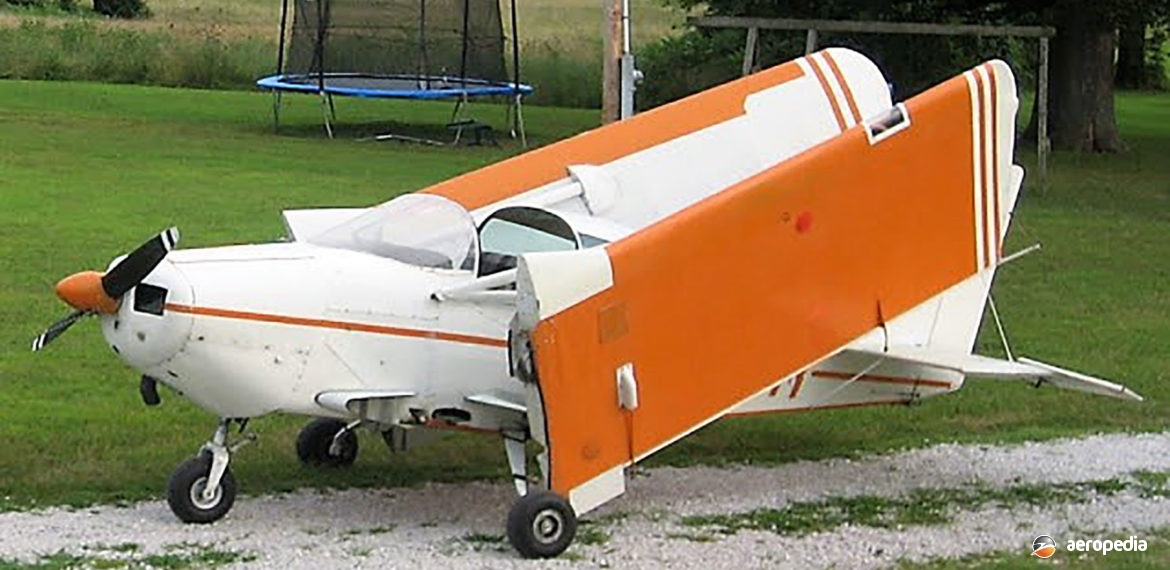Photograph:
An American registered Stits SA-11B Playmate (unknown)
Country of origin:
United States of America
Description:
Single or two-seat low-wing sport monoplane
Power Plant:
[SA-11B]
One 86 kw (115 hp) Lycoming O-320 four-cylinder horizontally-opposed air-cooled engine
Specifications:
- Wingspan: 8.41 m (27 ft 5¾in)
- Length: 5.59 m (18 ft 4 in)
- Height: 2.06 m (6 ft 9 in)
- Wing area: 11 m² (120 sq ft)
- Max speed: 212 km/h (132 mph)
- Cruising speed: 193 km/h (120 mph)
- Service ceiling: 5,300 m (17,500 ft)
- Rate of climb: 495 m/min (1,625 ft/min)
- Range: 684 km (425 miles)
- Fuel capacity: 91 litres (20 Imp gals)
- Empty weight: 402 kg (886 lb)
- Loaded weight: 680 kg (1,500 lb)
History:
The Playmate was one of a series of designs of light aircraft produced by Raymond Stits in the United States, the SA-11 Playmate being produced in two variants, the SA-11A fitted with a 63 kw (85 hp) Continental C-85 engine, this being a single-seater; and the SA-11B being a two-seater with engines fitted including the Lycoming O-290 and O-320. It was aimed at the amateur construction market, the prototype being completed over a period of three months and being first flown in 1952. The prototype was eventually donated in 1969 by Mr Pitts to the EAA Museum in Oshkosh, Wisconsin.
The Playmate was available in either plans-only form or as a partial kit. The fuselage was built from welded steel and the wings from wood, and was fabric covered. Although it was a low-wing monoplane, the wings were strut braced, and were able to be folded via a quick release mechanism. Quite a number of sets of plans and part kits were sold around the world and a number survive.
Construction of an SA-11A Playmate was commenced in Western Australia by Mr J Bennett of Rossmoyne, the registration VH-UME² (c/n W.35) being allotted, but the aircraft is not known to have been completed and flown.

